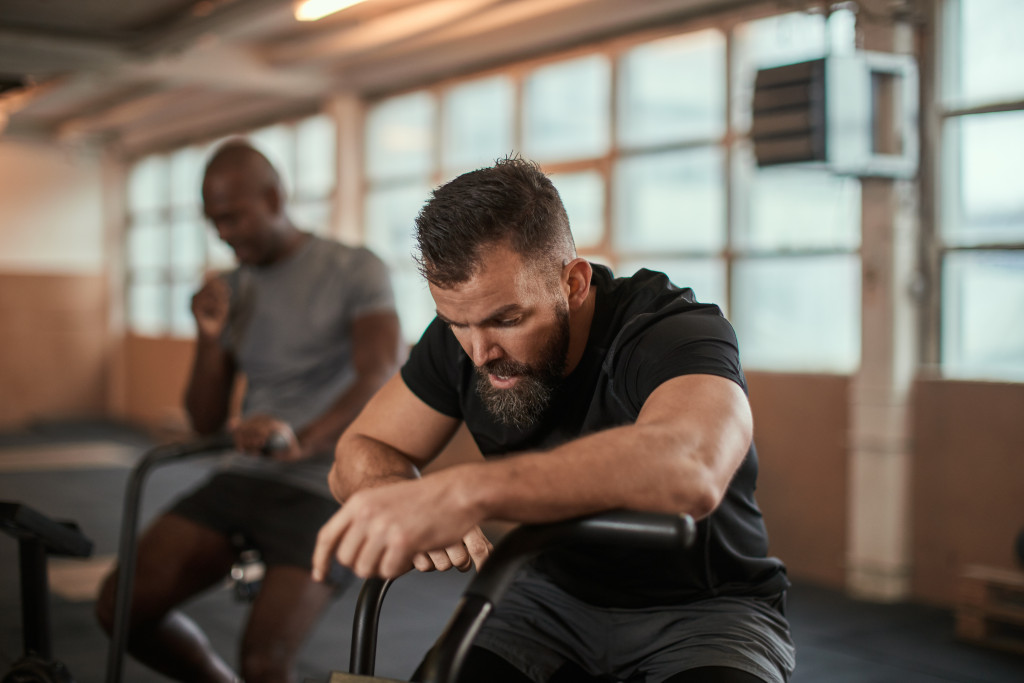Working out is a great way to stay healthy and fit. But even the most experienced athletes can encounter a workout mishap. Muscle strains, joint injuries, and other accidents are not uncommon when lifting weights or performing high-intensity exercises. While these injuries can be serious, they don’t have to ruin your progress. Here’s what you should do in case of a workout mishap.
Seek Medical Help Immediately
You must seek medical attention immediately if you experience pain, swelling, or other symptoms related to an injury sustained during a workout. A doctor can assess your injury’s severity and recommend the appropriate course of treatment. This could include rest, physical therapy, and/or medications to help alleviate your symptoms.
In some cases, surgery may be necessary if there is significant damage to the affected area. Accidents that need surgery include the head or neck, broken bones, and torn ligaments.
You may also visit the dentist if the injury involves your teeth. They may recommend a root canal or other restorative procedures, especially when the damage is severe. Make sure that you follow your physician’s instructions carefully and take all prescribed medications as directed for optimal healing results.
Rest & Ice
Rest is essential for proper healing and recovery if you don’t require medical attention for your workout mishap but still feel discomfort or pain in the affected area. You should also apply ice packs throughout the day (no longer than 15 minutes). This helps reduce inflammation caused by muscle strains or joint injuries associated with working too hard. It’s also important that you avoid exercising until the affected area has completely healed, as this could cause further complications down the line.
If possible, stick with low-impact activities such as walking or swimming until you feel up for more intense exercises again. You can also strengthen and stretch the affected area with lightweight training. This will help you return to your regular workout routine in no time.
Modify Your Workouts
Once your injury has healed sufficiently, consider modifying your routine so that it doesn’t put too much strain on the affected area(s). For example, if you recently injured your shoulder while weightlifting, try doing lower-intensity exercises that focus on strengthening other areas. You can do this through chest presses or leg lifts instead of overhead lifts until your shoulder feels better again. This will give your body time to heal while still allowing you to stay active without putting yourself at risk of further injury.
If you are returning from a major surgery due to severe injury, consult your physician to ensure that you’re doing the right exercises and using the correct form. They may suggest you do exercises under their supervision until you can safely continue on your own.

Be Prepared
The best way to avoid workout mishaps is to be prepared and take the necessary precautions. You can prepare by doing the following:
- Start by stretching and warming up your muscles before any physical activity
- Make sure you use proper form when lifting weights or performing exercises to avoid injury
- Give your body rest days in between workout sessions for optimal recovery
- Increase intensity gradually so that your body can adjust properly without strain or overexertion
- Invest in quality exercise equipment to limit the risk of injury
- Drink plenty of fluids and consume a balanced diet for optimal energy levels during physical activity
Prevention Is Key
The best way to handle a workout mishap is to avoid it altogether. Ensure you always warm up and cool down properly before each session. Be mindful of your body’s limits, and don’t push yourself too hard. Take breaks if needed and modify your routines so that they are suitable for your fitness level. Aside from these, ensure that your equipment is in good working condition, and invest in quality gear to minimize the risk of injury. If you’ve been inactive for some time and are just returning to physical activity, consult a physician before starting any strenuous exercises.
Listen To Your Body
Above all, listening to your body during workout mishaps is important. Don’t ignore any aches, pains, or discomfort during physical activity. If you’re feeling overwhelmed or exhausted, take a break and don’t push yourself to continue. Pay attention to your body’s signals and make necessary adjustments in intensity or duration if needed. Pushing yourself will put you at greater risk of injury, so taking things slow and steady is best.
No one wants to experience a workout mishap. Still, it happens occasionally, even with experienced athletes and trainers alike! The key is knowing how best to handle these situations, so they don’t impact your progress in any major way in the future. These are all effective ways to handle potential injuries associated with working out so you can get back on track quickly! Good luck!

